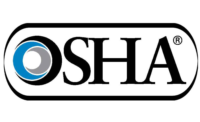 In this case, it does much more than merely hurt. “This case” refers to last Thursday’s (October 24, 2013) rather extraordinary admission by OSHA chief Dr. David Michaels that hundreds of OSHA’s permissible exposures limits (PELs) are far out of date, basically useless, and in fact dangerous.
In this case, it does much more than merely hurt. “This case” refers to last Thursday’s (October 24, 2013) rather extraordinary admission by OSHA chief Dr. David Michaels that hundreds of OSHA’s permissible exposures limits (PELs) are far out of date, basically useless, and in fact dangerous.
In the United States, it is estimated that chemicals are the cause of more than 190,000 illnesses and 50,000 deaths suffered annually by workers, according to research by NIOSH and the National Cancer Institute and cited in 2006 by the California Policy Research Center. The Center says, “These numbers are likely an underestimate due to long latency periods between chemical exposures and the onset of disease, unrecognized relationships between illnesses and chemicals, and other factors.”
Dr. Michaels opened his telephone-hook up press conference by citing those numbers. He went on to say exposures are currently occurring that are causing worker illnesses and death.
“Occupational disease continues to exact a tremendous toll in California,” according to the California Policy Research Center. Each month, an estimated 1,900 Californians are diagnosed with a preventable, deadly chronic disease that is attributable to chemical exposures in the workplace; another 540 Californians die as a result of a chronic disease linked to chemical exposures in the workplace.
OSHA, meanwhile, has adopted workplace exposure limits for only 193, or about 7%, of the 2,943 chemicals produced or imported in the U.S. at more than one million pounds per year. Immigrants, minorities, and lower-income groups—as workers and as residents—are at particular risk of exposure to hazardous chemicals, according to the policy center.
Dr. Michaels’ truth-telling was blunt, especially for a political appointee serving the current administration and with no plans to retire. “OSHA PELs do not adequately protect workers,” he said. “Many are dangerously out of date.
“Unfortunately most of our PELs were adopted more than 40 years ago. Research clearly indicates these limits are not protective of workers health, Complying with OSHA’s current PELs will not guarantee health,” he said.
The confession or concession continued: “We’re calling attention to fact OSHA’s limits are out of date and not protective,” said Michaels. “There are better alternatives.”
California’s state OSHA plan exposure limits are stricter. NIOSH Recommended Exposure Limits (RELs) and the American Conference of Governmental Industrial Hygienists’ (ACGIH) Threshold Limit Values (TLVs) are in many, many instances lower than OSHA’s exposure limits, hundreds of which were adopted from 1968 TLV data, which in turn was based on research going back to the early 1960s or even the 1950s.
Dr. Michaels conceded more ground in his press conference: “The resources needed to update hundreds of PELs are substantial, and as of now OSHA can’t regulate thousands of chemicals in workplace
“There is widespread knowledge these PELs are out of date, very out of date,” said the OSHA boss. “Alternatives are clearly better than ours. There is no reason to be defensive. The science was very clear, We knew workers were getting sick at levels below PELs. This was very obvious to us during the Deepwater Horizon cleanup, when we saw workers getting sick at exposure levels below certain PELs.
“Going back to last 3, 4 years here at OSHA, when our team first came in. It was very clear when we arrived the standards setting process was broken.”
On OSHA’s web site now is a side by side comparison of exposure limits for scores of substances; the limits set by OSHA; recommendations by NIOSH; limits adopted in California, and the ACGIH’s more current TLVs.
Two examples:
● For ammonia, OSHA’s limit is 500 ppm; Cailfornia’s 8-hour limit is 25 ppm; NIOSH recommends 25 ppm and the TLV is 25 ppm.
● For chloroform, OSHA’s limit is 50 ppm; California’s 8-hour limit is 2 ppm; NIOSH recommends 2ppm for not more than 60 minutes; the TLV is 10 ppm.
In a strange twist befitting an agency such as OSHA tangled up in bureaucratic legalities, feasibility studies, economic burden studies, Dr. Michaels asserted several times that agency inspectors will cling to the old, useless and potentially dangerous PELs in enforcement cases.
The fact that OSHA is now attempting to educate and alert employers to the dangerous shortcomings of its own exposure limits and better alternative will not now, nor in the future, presume employers are aware of the new comparison tables and alternatives, and no citations will be forthcoming if companies fail to comply with the stricter alternatives.
“This is strictly informational and enforcement neutral,“ said Dr. Michaels. He went on to throw water on the notion that the General Duty clause would be used very often to hold companies accountable for lowering exposure limits to the more stringent lists now accessible on the OSHA web site.
Summed up one Washington OSHA-watcher: “This in no way means we will see the outdated PELs updated. That is a long way down the road, but we are at least now on the correct highway.”
That’s of little solace to workers whose health is suffering due to years and decades of working with toxic substances at alarming levels. And to the families of those who have died from over-exposures. If you take the statistics at face value, annual fatalities due to occupational diseases are approximately ten times the annual number of job fatalities due to injuries.
Here is one more bit of truth that sickens and kills: occupational illnesses capture few headlines and generate few discussions, and occupation medicine in the U.S. is tremendously unpopular in the medical community.
Board-certified occupational physicians constitute only about 0.2% of U.S. physicians, and only half of U.S. medical schools require instruction in occupational medicine (and an average of only six hours, at that, according to the California Policy Research Institute.
Decades of neglect and serious funding shortfalls needed to raise the profile and awareness of occupational illnesses and deaths in the U.S. shows no sign of changing. Putting a significant, long-term emphasis on preventing occupational diseases as about as far-fetched as OSHA being able to update the PELs.



